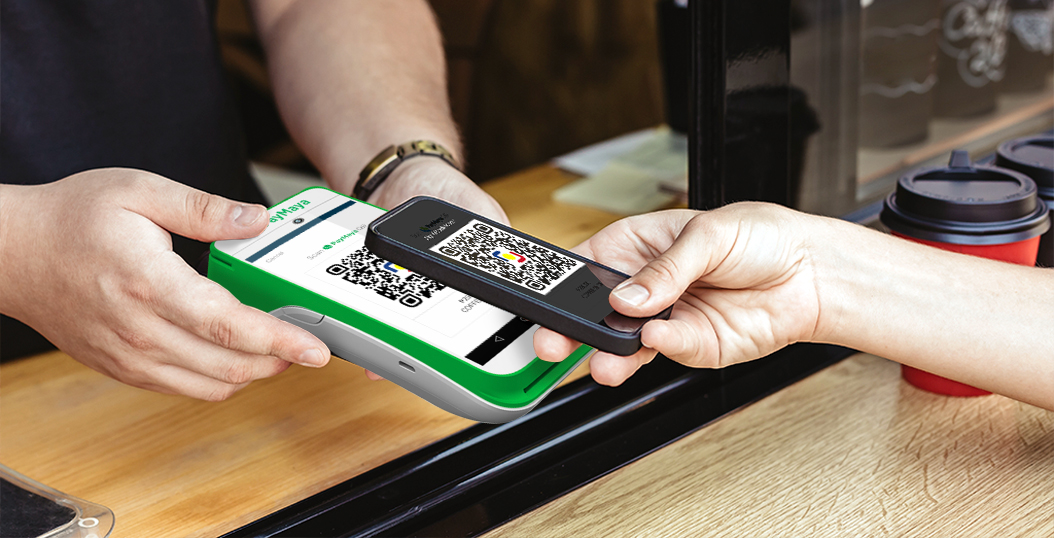
In the first half of 2021, the Bangko Sentral ng Pilipinas (BSP) officially launched the National QR Code Standard (QR Ph) for person-to-merchant (P2M) payments. This allows businesses to accept cashless payments from their consumers, not just through e-wallets but also through accounts in participating banks.
This is a big step in BSP’s Digital Payments Transformation Roadmap (DPTR), which aims to convert 50% of the total volume of retail payments from cash to digital by 2023. The DPTR also aims to increase to 70% the number of Filipino adults with financial accounts.
As a new program, it’s inevitable that some people may have questions about QR Ph and its implementation. Below, we answer some of the most common questions about this BSP initiative.
QR or quick response codes have become a popular electronic payment method over the past few years. As such, Philippine Payments Management, Inc. (PPMI), under the guidance of the B SP, launched QR Ph. PPMI is joined by other payments industry participants in this endeavor in order to establish a National QR Code Standard and create a more efficient payment system in the country.
What sets QR codes—and thus, QR Ph—apart from traditional debit and credit cards is that it’s contactless, which proved to be particularly advantageous during the height of the COVID-19 pandemic.
Ultimately, QR Ph aims to create interoperable payment solutions so that both merchants and consumers won’t have to open accounts with various providers. Merchants can accept digital payments from customers using any bank or e-wallet app without having to use multiple QR codes or integrate with many devices and systems.
During the pilot launch of QR Ph in early 2021, only select merchants were included in the program. Customers with accounts in the following banks were able to use QR Ph to pay for their purchases from the participating businesses:
On the other hand, select merchants with accounts in the following financial institutions with InstaPay were able to receive payments via QR Ph:
PPMI and BSP expect to onboard more merchants from both formal and informal business sectors by the end of 2021.
QR Ph was designed for interoperability, so that any participating bank and non-bank electronic money issuers (EMIs) can facilitate fund transfers and payments. This means that QR Ph can be used for both person-to-person (P2P) and person-to-merchant (P2M) transactions.
As part of the QR Ph facility, merchants and business owners who use Maya can receive payments through their accounts. Thus, even if they don’t have a bank account (which is especially common for casual sellers and the informal sector), they can still receive electronic payments.
There are three groups that will benefit the most from QR Ph: consumers, businesses, and service providers.
1) Consumers
For consumers, QR Ph offers a safer and reliable way to pay for their purchases. QR Ph follows the Europay-Mastercard VISA (EMV) standard, which is the worldwide benchmark for transaction security. In addition, because QR code payments eliminate the physical handling of cash, QR Ph can help customers minimize the risks that come with bringing a large amount of money.
2) Businesses and Merchants
What’s great about QR Ph is that it isn’t just for bigger, more established businesses. It will also benefit small, unbanked merchants like sari-sari store owners and tricycle drivers. This is because QR Ph caters to both low- and high-value transactions and gives the same benefits for all. The perennial “Wala po ba kayong smaller bill?” problem will be a thing of the past with QR Ph.
Using QR Ph also eliminates errors, since the receiving account number is already “saved” in the QR code. The only thing that customers have to double-check is the amount that they need to pay, which is definitely an easier sequence of numbers to remember and input.
3) Payment Service Providers
Being a part of the QR Ph P2M facility can help payment service providers expand their customer base and improve their business relationships with merchants. The data gathered from QR Ph transactions can also help service providers create services that are tailor-fit to address their customers’ unique needs.
QR Ph P2P is focused on peer-to-peer transactions, including functions such as fund transfers, remittances, and even donations. Micro- and small-scale enterprises, as well as those belonging in the informal business sector (e.g., palengke vendors) may also make use of QR Ph P2P to accept payments.
Meanwhile, QR Ph P2M is designed for the formal commercial sector. This includes businesses like department stores, restaurants, gas stations, and pharmacies. In the future, QR Ph will also cover bills payment.
As previously mentioned, QR Ph is a big step towards achieving BSP’s DPTR goals. The facility also aims to support small businesses by providing them with a reliable payment solution. It also seeks to empower MSMEs by helping them embrace the benefits of digital transactions.
For consumers, QR Ph can provide a more seamless payment experience and guarantee secure transactions.
No. There is no need to download a separate mobile app or visit a dedicated website to use QR Ph. What they need is the mobile application of their bank or EMI that is part of the QR Ph facility, like Maya.
Through QR Ph, and digital payments in general, Filipino consumers and entrepreneurs will enjoy faster, more secure transactions. With the continuous growth of e-commerce and the increasing popularity of cashless, contactless payments, this is a step in the right direction for the Philippine finance sector.
Merchant inquiries:
Maya is powered by the country's only end-to-end digital payments company Maya Philippines, Inc. and Maya Bank, Inc. for digital banking services. Maya Philippines, Inc. and Maya Bank, Inc. are regulated by the Bangko Sentral ng Pilipinas.
www.bsp.gov.ph